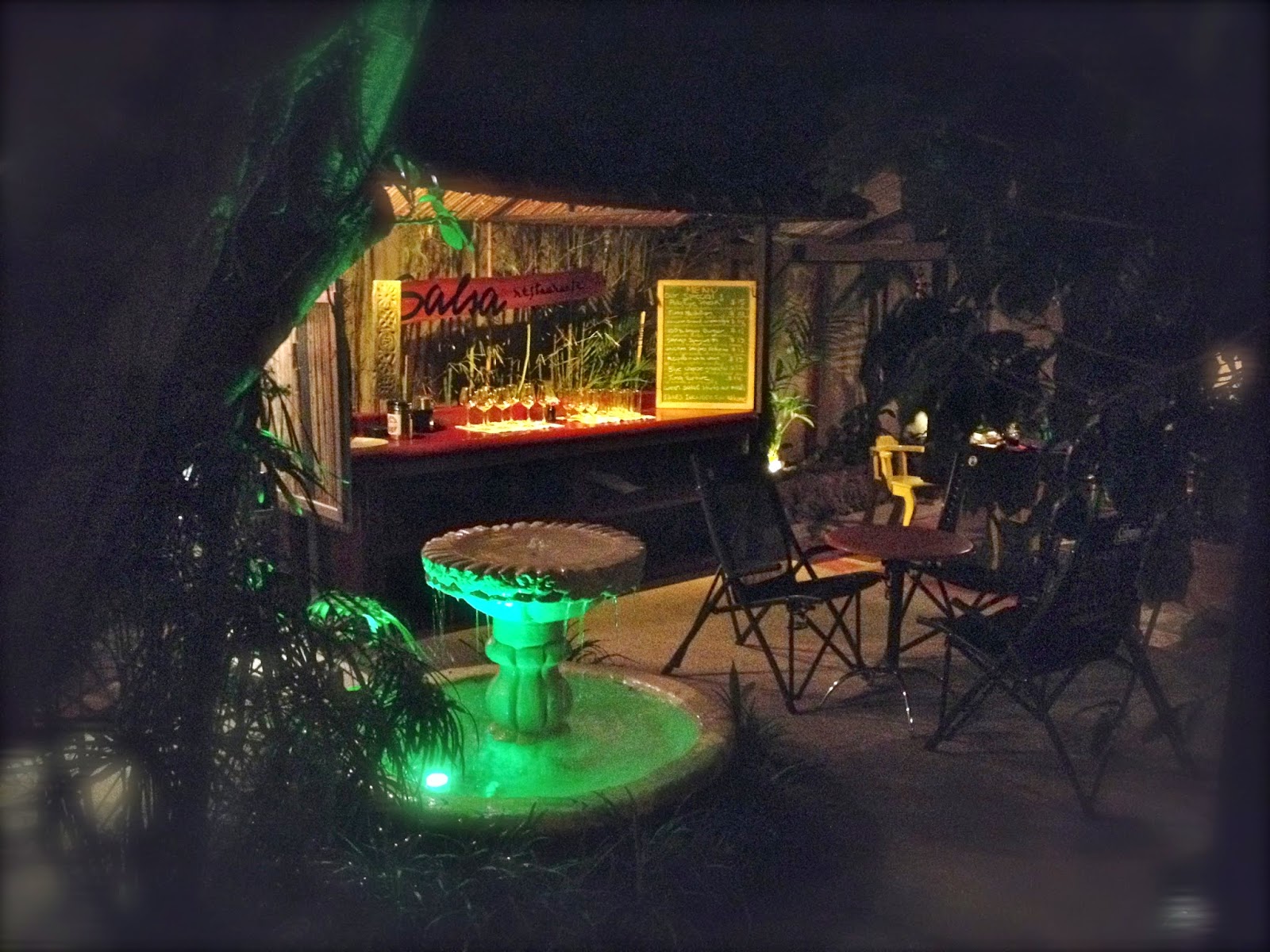 |
| Blooming Aronia melanocarpa in RavenCroft's West Hedge |
This morning found me and Joy in the west hedge gathering aronia berry. The A. melanocarpa, Viking, has been in the hedge about 15 years now. A prolific bearer and versatile in the kitchen, this berry is a delightful addition for most gardens and would benefit many a hedgerow. http://plants.usda.gov/plantguide/pdf/pg_arme6.pdf
 |
| Bioflavinoid rich aronia berries |
The purple-black astringent berry is not a snack fruit for out of hand eating. It is best simply processed into juice, syrups, jams, wines and sauces. As an herbalist interested in optimum nourishment, it makes sense to include as many nutrient dense foods in garden and diet as possible and aronia has earned her keep in my garden...
Native to North America, aronia has found world wide acceptance as a food with deeply nourishing properties. Rich in bioflavinoids, aronia has the highest concentration of the antioxidant, anthocyanin, of any fruit, with elderberry running a close second. Improving circulation and strength of blood vessels, the berry may reduce blood pressure with regular consumption. Along with reducing general inflammation and specifically inflammation of the urinary tract adding aronia berry to your diet is a simple, delicious way to improve health. http://aroniaberrynews.com/
 |
| Fresh harvested aronia berries |
As a gardener, I enjoy the tenacity and vigor of the plant itself. Aronias are hardy, unfussy as to soil and will grow in sun and part shade. At RavenCroft the shrub holds a place in the damp, clay soil of the west hedge. Every year, even with wide variances in weather, the 6’ x 6’ bush consistently yields 25-35 pounds of fruit.
 |
| Beautiful spring blossoms, aronia is in the rose family |
A deciduous shrub, aronia begins unfurling her year round beauty with the arrival of deep green glossy leaves in spring. Having a leathery texture and somewhat fuzzy appearance, the leaves provide a great backdrop for the beautiful white flowers tinged with pink and born in clusters on the branches. After the blossoms fade the dense green holds a steady place in the garden or hedge for the summer. Toward late summer the abundant green berries begin turning black. This is a bush that offers color and interest for months on end.
As fall approaches myriads of deep dark purple black berries literally drip off the limbs. Easy to harvest in their tidy clusters, I picked 15 pounds in just under 30 minutes this morning. It was a fun morning to be gathering the berries, as the annual bike event riders were pedaling by and beyond the hedge I heard a steady stream of “thank-yous’ offered to the police officer guiding traffic around the tight corner...
 |
| IronMan bike race and a stream of Thank-you's bless the harvest |
Once the fruit is gone and the weather turns toward its cold and wet wintery self; the leaves turn a vibrant red signalling the dark days scented with wood smoke will soon settle upon the croft.
 |
| Red leaves of fall |
With Aronia wine, Aronia-Fennel Oxymel, Aronia syrup and vinegar in the cellar all is well and the weather just keeps life interesting!
 |
| See you at market! |
If you’re already growing aronia or can find some at your local farmer’s market, give this delicious Aronia Chutney recipe a try and let me know what happens!
 |
| Tastes as delicious as the picture looks! |
Aronia Chutney
2.5 # aronia berries
2 # apples any variety, chopped
1 onion, diced
3 yellow banan peppers, any variety will work
3 small pilloncillo towers of raw sugar (find at local tienda)
1 cup dark brown sugar, 2 if no pilloncillo is found
1 cup fennel flower vinegar
1.5 oz minced garlic
1 T ceylon cinnamon punded fine in mortar
2 lemons juice and zest
2 oranges juice and zest
Put all ingredients in kettle, bring to boil, simmer until thick. Enjoy fresh for up to one month refrigerated. Freeze or can what won't be eaten for later...Enjoy!
Aronia Fennel Oxymel
yield 1 gallon
4# Aronia
4# apple cider vinegar (4 pints)
4# honey (2 qts)
fresh fennel blossoms to taste
Simmer aronia with vinegar until berries pop, crush with a potato masher, let sit until cool, press mixture through a mesh sack, return juice/vinegar to pan, heat with honey and fennel just long enough to dissolve honey. Strain and bottle. Store in cool, dark place.
Tangy oxymels are an easy way to preserve the harvest and can be enjoyed many ways. Enjoy with sparkling water for a thirst quenching, nutrient dense beverage, add to fruit salad to brighten flavor or to a vinagrette for a green salad dressing, enjoy off the spoon or drizzle over pancakes! Have fun imagining more ways to include this nourishing food in your daily diet. Let us know what you come up with!
More information on aronia can be found here: http://aroniainamerica.blogspot.com/2011/03/where-to-purchase-aronia-plants.html
Until next time!
Be well, make time to go outside and play...











































